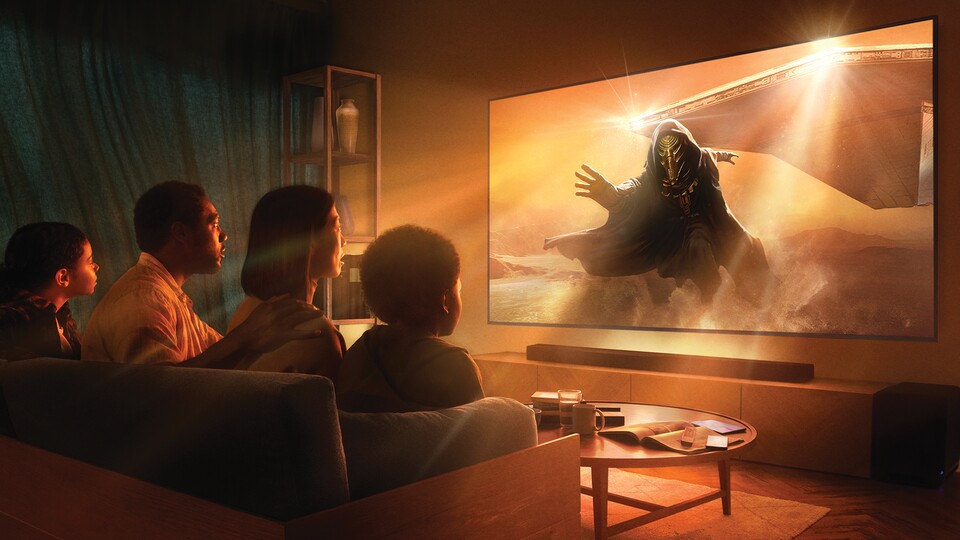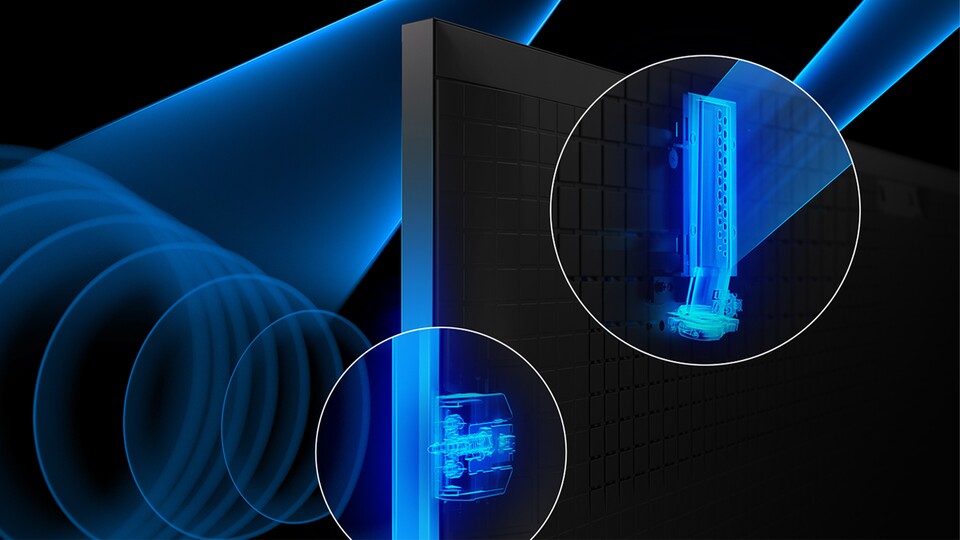
Sony has announced its new TV series. (Image: Sony)
Advertisement
Sony's new TV line-up has been officially unveiled. The sparrows were already whistling from the rooftops (and we also speculated): Sony's flagship model this year will not be OLED.
While LG and Samsung fight for OLED supremacy, Sony is taking a different path: that of mini-LED.
Why it matters: The tech giant's three new TVs could be a guide. The fact that the Japanese are pushing ahead with the development of mini-LEDs at least suggests that the air for OLEDs may become thinner in the future.
There are also exciting new features, which we will go into in more detail at the end of this article:
Advertisement
- Acoustic Multi-Audio+
- Voice Zoom 3
- Presets for Netflix and Prime Video
In detail: Sony is coming up with three new TV series this year: Bravia 7 to 9. Only the Bravia 8 still has an OLED panel.
Both the Bravia 7 and the flagship rely on mini-LED instead.
What sizes will there be? Sony mainly limits itself to the standard diagonals.
- Bravia 7 (Mini LED): 55, 65, 75, 85 inches
- Bravia 8 (OLED): 55, 65, 77 inches
- Bravia 9 (Mini LED): 75, 85 inches
This is what Sony says about mini LEDs: Apart from the fact that the number of dimming zones is tripled (Bravia 9) or eightfold (Bravia 7), Sony is keeping a low profile. It suggests that the manufacturer is primarily relying on the 30 percent higher light output.
Are there exact technical data? Not at the time the article was published because the relevant product pages are not yet online.
In addition, Sony will continue to carry models from last year. Specifically, these devices are:
- A95L
- A95K
- X90L
- X85L
- X80L
- X75WL
These are the new functions
Two features in the sound area and new presets are particularly interesting.
Sound: Acoustic Multi-Audio+ and Voice Zoom


Additional tweeters on the chassis are intended to provide more all-round sound. (Image: Sony)
Sony wants to get sound directly from the display And that's why, according to its own statement, it was the first manufacturer in the world to build a tweeter directly on the edge of the TV. The Japanese call this function Acoustic Multi-Audio+
.
This is said to have a similar effect to Acoustic Surface on OLED TVs like the A95L, where the screen vibrates and becomes a speaker itself. However, the technology does not work on devices with backlighting.
An AI also recognizes voices and highlights them. Sony calls this Voice Zoom. This is intended to ensure that dialogues that are too quiet remain clear and understandable. How well all of this works in practice remains to be seen.
Image: Prime Video Calibrated Mode
Previously, Sony TVs had a dedicated Netflix picture mode. This makes perfect sense, as the streamer's content deliberately has its own look.
The same thing happens with the new models for Prime Video, which means the image quality is adapted to this provider. Fallout, for example, should then look even better.


1:59
Fallout: In the first scene from the series, the vault dweller meets a bounty hunter
Also a plus: Sony is doing something for the environment. The new remote control, for example, consists of around 80 percent recycled material and will be rechargeable via USB.
Prices and availability
At the time of writing there are no prices yet. According to Sony, the Bravia 7 to 9 models can be pre-ordered from April 29, 2024. Price tags can then be expected at the latest.
If you want to find out about the new models from other manufacturers, we already have suitable articles for you:
This year, Sony is increasingly relying on mini-LED, a technology that could replace conventional LED televisions. To achieve this, the manufacturer is foregoing many new models and instead is only bringing three new series onto the market.
What do you think of Sony's approach? Do you think the focus on mini-LED will pay off? Are you interested in one of the new models?